B&W 802 Diamond (Rosenut)
Original price was: R240,000.00.R125,000.00Current price is: R125,000.00.
B&W 802 Diamond
MSRP: $15,000/pair
Speaker: 802 Diamond
Type: Three-way, tower
Tweeter (size in inches, type): 1, diamond dome
Midrange (size in inches, type): 6, FST woven Kevlar
Woofer (size in inches, type): 8, Rohacell/carbon fiber (2)
Nominal Impedance (ohms): 8
Recommended Amp Power (watts): 50–500
Available Finishes: Rosenut, Cherrywood, Piano Black Gloss
Dimensions (W x H x D, inches): 14.5 x 44.7 x 22.2
Weight (pounds): 159
Description
This set is in NEW condition
July 2012

 The 802 loudspeaker from Bowers & Wilkins has been an audio staple for over three decades. From the Matrix through the Nautilus to the Diamond editions, few can deny the unprecedented levels of technology and value that B&W has brought to market by way of the 802 over the years. In fact, it was a pair of 802 Nautiluses fed by McIntosh MC275 amplifiers and a Linn Sondek LP12 turntable that captivated me enough to leave my roots in car audio and get serious about home audio.
The 802 loudspeaker from Bowers & Wilkins has been an audio staple for over three decades. From the Matrix through the Nautilus to the Diamond editions, few can deny the unprecedented levels of technology and value that B&W has brought to market by way of the 802 over the years. In fact, it was a pair of 802 Nautiluses fed by McIntosh MC275 amplifiers and a Linn Sondek LP12 turntable that captivated me enough to leave my roots in car audio and get serious about home audio.
However, as time passed and my listening experience grew, I came to classify the 802 Nautilus as more a “love to own” than a “must own” speaker. Despite its sophisticated engineering and luxurious build quality, at some point I reluctantly realized that I was more impressed by what the 802 embodied than by how it sounded, and I prefer that ratio to be reversed.
But now there’s a new 802 that, B&W claims, is not only endowed with the finest parts they’ve ever made and/or used, but sounds better than any other B&W speaker, past or present. Originally announced in late 2010, the 802 Diamond was released as one of an entirely new family of 800-Series speakers, each of which has its own tube-loaded diamond tweeter. What’s more, a pair of 802 Diamonds costs $15,000 USD — only $1000 more than its immediate predecessor, the 802D.
Heritage
Having kept an eye and ear on the evolution of the B&W 802 over the years, I’ve learned a few things not only about its sound, but about its heritage. For one thing, Bowers & Wilkins has been building speakers since before I was born. Founded by John Bowers and Peter Hayward in 1966, B&W was initially operated out of the back of an electronics store run by Bowers and his good friend Roy Wilkins. Focusing on building innovative yet quality speakers at affordable prices, Bowers spent B&W’s first four years building such traditional monitors as the P1, DM1, and DM3, and plowing all profits back into the company. This discipline gave Bowers not only the ability to expand the business, but the luxury of exploring pioneering design approaches that would later take B&W in new directions.
In 1970, several of those design ideas came to fruition in a radical new speaker that used two cabinets, each containing a driver responsible for a particular frequency range. The upper enclosure housed a curved, 11-segment electrostatic panel that handled the mid- to high frequencies, the lower enclosure a 12″ woofer in an “infinite” baffle, for the lows. Working together as one, the two enclosures were something the likes of which the world had never seen or heard. B&W called it the DM70. The DM70 set the bar pretty high for Bowers and Wilkins, but they persevered by bringing other innovations to market: Kevlar drivers; further exploitation of driver, cabinet, and crossover utilization; and, in 1979, the first 800 speaker — the 801.
Feeling they needed a more domesticated, affordable version of the 801, in early 1980 B&W introduced the 802. To retain the 801’s sonic virtues, the designers used many of that model’s components in the 802, including the mid- and high-frequency drivers, crossover, and wooden enclosures. What changed was the bass enclosure. The use of twin 6.5″ woofers instead of a single 10″ driver meant that the 802 could have a sealed bass enclosure that occupied less than half the footprint of the 801 while giving up only 10Hz of extension. Although this design was sonically successful, there were problems with the wooden midrange enclosure, which tended to crack with age. This prompted research into a more stable and acoustically solid head enclosure, and the result was a mixture of fiberglass and concrete that B&W calls Fibercrete. The 801F had the new Fibercrete midrange enclosure as well as B&W’s Environmental Controls boundary-compensation feature. Controversial to this day, Environmental Controls was not included in the 802F model, but reappeared in the 802FS, which also included a new polyamide domed tweeter.
In 1986, Laurence Dickie (now of Vivid Audio) designed for B&W his groundbreaking internal bracing technique, called Matrix. This new grid-like construction technique dramatically improved cabinet rigidity and directly reduced cabinet colorations to unprecedentedly low levels. This prompted B&W to upgrade its drivers to more fully exploit the benefits offered by the Matrix technology: metal-dome tweeters, Kevlar midrange drivers, and new woofers were now used. In 1987, all 800-Series models were upgraded to incorporate these changes, as well as ported bass enclosures, and all 800 models were now biwirable. The Matrix 800 Series 1 line was released in 1987, followed by the Matrix 800 Series 2 (1988) and Series 3 (1989).
In 1993, B&W created a buzz with the world premiere of a new flagship speaker, the Nautilus. Representing B&W’s best attempt at loudspeaker design, the Nautilus was more than five years in development, and had one of the most acoustically inert cabinets ever created, as well as revolutionary drivers, crossovers, and materials. Those outside the B&W group who were paying attention quickly surmised that the Nautilus wasn’t only a flagship speaker; it was the seed from which all future B&W speakers would draw their DNA.
Unfortunately, design complexity and huge manufacturing costs meant that five more years would pass before the general public could reap the benefits of Nautilus technology. Don’t forget, before Nautilus — or “BN,” as B&W likes to say — the 800 speakers were basically cubical boxes stacked atop each other, resembling an R2D2 droid. To be able to use Nautilus technology in their smaller designs, B&W needed to figure out how to fit a round tube into a square box. The solution was a complete modernization of the 800 Series. Devoid of anything resembling a cube, the new N802’s cabinetry was clearly derived from the Nautilus flagship, and remains essentially unchanged to this day. The N802 also marked the introduction of B&W’s Fixed Suspension Transducer (FST) midrange driver; smaller, more powerful motor structures using neodymium magnets; new 8″ Kevlar woofers; an innovative dimpled port surface B&W calls Flowport; and, for the first time, a simpler, higher-quality first-order crossover.
The next major update occurred in 2004, when B&W introduced the 802D. The “D” denotes a number of advancements made over the N802, most notable of which was a new tweeter diaphragm coated in diamond particles using Chemical Vapor Deposition and placed in a slightly different position atop the midrange enclosure. There were also updated FST midrange drivers, new bass drivers of carbon fiber and Rohacell, new aluminum plinths with casters, and an improved crossover network.
802 Diamond
By now it should be clear that B&W is not a company that releases frequent minor updates. When they revise a model, major changes are made and abundant benefits are realized. It should therefore come as no surprise that the only thing carried over from the outgoing 802D is the cabinet structure measuring 44.7″H by 14.5″W x 22.2″D. Every other aspect of the 802 Diamond has been tweaked or completely reworked. The 802 Diamond differentiates itself visually from the 802D with higher-quality Rosenut and Cherrywood finishes, said to be sourced from the top 10% of veneers now available. There’s also a beautiful new Piano-Black Gloss finish, which is what my review samples were clad in. Aluminum trim now surrounds all four drivers and covers the FST phase plug, and the grilles now attach magnetically rather than mechanically. The redesigned plinth has newly designed terminals of high-purity, oxygen-free copper. Beneath each plinth are pre-installed casters that permit easy adjustment of speaker positions. Once the final positions have been determined, these casters can be replaced in minutes by some of the most elaborate isolation spikes I have ever seen supporting a speaker. Considering the 159-pound weight of each 802 Diamond, I commend B&W for including such a simple yet helpful innovation.
This level of innovation and attention to detail are echoed throughout the manufacturing of the entire 800 line, which takes place in a 60,000-square-foot facility in Worthing, England. The bass enclosures are formed by pressing several layers of thin ply together in a massive die, then allowing the glue between them to set and the wood to dry under pressure. That done, each cabinet is sanded, outfitted with the Matrix internal bracing system, and coupled to a 1″-thick front baffle. The cabinets are then either veneered or, if ordered in gloss black, repeatedly wet-sanded and polished by hand to a mirror-like finish.

The making of the teardrop Marlan head and aggressively tapered aluminum tweeter enclosures follows a somewhat similar quality-control process, but is done in clean rooms elsewhere in the plant; once the Marlan resin has dried, it’s sanded, which produces a lot of fine dust that needs to be contained. After sanding, each enclosure is cleaned, primed, painted, and polished before the drivers are installed and cabinet assembly is completed. Every 802 Diamond that comes off the assembly line is measured in an anechoic chamber to ensure that its cabinet and drivers are all working together to meet B&W’s reference standard of +/-0.5dB. If they don’t, it’s back to the shop.

Appearance and build quality aside, the most notable changes from the 802D to the 802 Diamond were to the high- and low-frequency drivers. Designed and built in-house, the 802 Diamond’s two 8″ woofers now have dual magnets made of an alloy of neodymium, iron, and boron, symmetrically positioned inside a 38mm voice-coil. This new motor system yields less distortion, greater drive, and increased uniformity, while reducing the reflective surface area behind the driver. The driver’s larger center section makes it look a little different from the 802D edition, but the diaphragm remains essentially unchanged: It’s still constructed using B&W’s Rohacell composite, which is essentially a structural foam core sandwiched between two layers of carbon fiber. Both woofers breathe through B&W’s Flowport, an enormous downfiring port whose surface is dimpled, like that of a golf ball, to reduce air turbulence. Directly below the port, inside the new plinth, is the speaker’s first-order crossover, which has undergone extensive component upgrades from the 802D. The new network makes use of high-quality Mundorf gold-silver-oil capacitors in the high-frequency section, sending frequencies above 4kHz to the new diamond tweeter, and below 350Hz to the woofers. B&W claims that this upgrade has resulted in a “dramatic” improvement in sound quality.

The diamond diaphragm of the new tweeter remains unchanged from the 802D version, and is still made using chemical-vapor deposition, a process in which carbon (diamond) is grown inside a manmade environment and slowly deposited on a mold to form the diaphragm. The diaphragm is then cut to shape by laser, and coated with platinum to increase its strength. The process is time-consuming and expensive, but results in an ultimately rigid material with very low mass. Having mastered this process over the years, B&W focused on other aspects of the tweeter for the 800 Diamond Series, such as the diaphragm’s surround and motor assembly. I couldn’t find out much about the new surround, but was able to determine that it has been optimized for smoother sound and wider dispersion, while minimizing distortion through further manipulation of the compound material of which the surround is made.
The changes made to the 802 Diamond tweeter’s motor system are more profound, and not dissimilar to those made to the bass and midrange drivers. There are differences, though: Instead of two neodymium magnets, the new motor system takes advantage of four, positioned atop both the silver-coated center pole and top plate as well as behind it. With the magnets in these orientations, the motor system can not only generate a stronger magnetic field, but generate less heat in the process, which in turn yields greater efficiency and lower dynamic compression. These changes are claimed to result in improvements in sound quality by providing a more uniform dispersion of sound while simultaneously enabling greater dynamic extension.
Sound
With all of these improvements, I was eager to plant myself in my listening chair and spend some hours exploring the boundaries of B&W’s new 802 Diamonds. I began by listening to “Desire,” from Boz Scaggs’s Dig (CD, Virgin 8 10635 2). The track begins with a deep, forceful bass line that can be challenging for some equal or lesser speakers to communicate accurately. The result can be blurred or bloated bass with less-than-ideal definition. Through the 802 Diamonds I could hear none of this; I was treated to cleanly defined bass that was textured and detailed enough for me to hear the bass-guitar strings being plucked in the background, the tone of each note easily differentiated. As the track progresses, a tambourine plays consistently off to the right, later complemented by a triangle on the left. The enhancements made to the diamond tweeter and crossovers were evident here: I could clearly hear the tambourine’s zils shimmer each time the instrument was struck. What’s more, the combination of transient speed and air with which the zils were presented contributed to a very convincing sound.
I had a similar response to the timing and natural decay of the triangle. I’m used to hearing the triangle farther back on the stage, with a fast transient attack and little decay. The 802 Diamonds painted a completely different picture, positioning the triangle more forward on the stage, with longer decays. Despite being impressed by the individual improvements made in driver integration, transparency, and timing, I was most impressed by their cumulative effects, particularly with respect to imaging. In this track, Scaggs’s voice is positioned center stage, above his electric guitar and between the triangle and tambourine. I state this not to be obvious, but because the degrees of dimensionality and solidity with which the image was presented allowed me to do so.
The placement of Scaggs and his guitar on the stage, and the realism with which they were portrayed, were the best I’ve heard from any B&W speaker, period. The crossover’s integration of the outputs of the midrange driver and tweeter was seamless, allowing for such textural cues as the grain in Scaggs’s voice, and the breath supporting it, to be easily heard without either driver drawing attention to itself. This isn’t to say that there was no room for improvement. Despite being imaged solidly in the vertical and horizontal dimensions, Scaggs’s voice was slightly more forward than his guitar, which made it sound as if someone else were playing behind him. I’ve also found that the Kevlar B&W uses in their FST midrange drivers has a slight inherent coloration that, in direct comparisons with speakers such as the Wilson Audio Sophia 3 and Revel Ultima Salon2, is consistently audible, particularly with male voices. Those minor quibbles aside, I felt as if I were listening to “Desire” in a new light through the 802 Diamonds.
Wanting to hear how the B&Ws would handle female voices, I cued up “Good Morning,” from Norah Jones’s latest album, Little Broken Hearts (CD, EMI 7 31548 2). With this simple arrangement — just an electric guitar to the right, and a Rhodes piano in the background offset by an acoustic guitar — I was able to focus on Jones’s voice, which was well textured and solidly imaged at dead center, with a healthy dose of in-the-room realism. The next track, “Say Goodbye,” is a playful one that involves a number of instruments, adds a bit of reverb to Jones’s voice, and is supported by a punchy kick drum. Despite the fact that a lot is going on in this arrangement, the 802 Diamonds never sounded congested, clearly delineating everything onstage without ever sounding as if they were dissecting the music.

I moved on to a 24-bit/192kHz recording: Eva Cassidy singing Paul Simon’s “Bridge Over Troubled Water,” from Best of Audiophile Voices V (24/192 FLAC, Premium). The 802 Diamonds really opened up when fed hi-rez material, and I was pleasantly surprised to hear that Cassidy’s voice now lacked much of that Kevlar coloration, sounding clearer and more neutral, with just the right amount of warmth. The 802 Diamond also had no problems fully communicating the dynamics and power of her voice without sounding bright, regardless of volume level. In fact, the 802 Diamonds remained in control even when pushed aggressively by my Classé CA-M600 monoblocks, filling center stage with Cassidy’s voice and the bass and drums, each of which maintained its sense of scale. Moreover, every instrument on stage was believably defined in three dimensions — opposed to what I’d noted of the positioning of Boz Scaggs’s electric guitar in “Desire.” I also appreciated the shimmer and decay of the cymbals in the Cassidy track — they sounded very natural, reminiscent of what I’d expect from a ribbon tweeter.
Listening to “Ride Across the River,” from Dire Straits’ Brothers in Arms (SACD/CD, Vertigo 9 87149 8), I was again reminded of just how well the 802 Diamond balanced all its attributes in an overall warm, musical character. Here, with the volume turned up well beyond any sane level, the resolution of high-frequency detail was present in spades, but in such a way that it never drew attention to itself. This was evident not only in how clearly I could hear the beads in the shakers, but also by how natural they sounded, and how easily I could determine the amount of force used to create that sound. Mark Knopfler’s voice remained controlled, retaining its warmth and liquidity, and microdynamics were portrayed accurately and naturally. This midrange warmth extended through the midbass as well, allowing the tone of the bass to be clearly delineated and its texture to be easily perceived. The lowest frequencies were firmly articulated, with no perceivable dips, which let me hear and feel them without dwelling on them.
No matter what I threw at it, the 802 Diamond maintained its warm, smooth composure, presenting everything with a relaxing yet confident ease. When a speaker can sound convincing with everything from pop music on “Red Book” CDs to high-resolution audiophile recordings, I appreciate it.
Competition
I struggled to find meaningful points of comparison between the 802 Diamond and its peers — the B&W offers levels of performance, technology, and build quality incommensurate with its price. I had to decide if I wanted to compare the 802 Diamond with other $15,000/pair speakers regardless of performance level, or if I should ignore price and base my comparisons on sound alone. I chose the latter route — if you’re willing to spend $15,000 on a pair of speakers, not only is sound quality of paramount importance to you, but you could probably spend even more, for even better sound. Another challenge was that I had no speakers on hand with which to directly compare the 802 Diamonds. Then I remembered — I still had the listening notes I’d made when, just a few months before, I was choosing my own reference speaker.
According to those notes, the first listening session I booked was to hear the differences between the 802D and the 802 Diamond. The system the vendor had set up comprised a Classé CA2300 two-channel amplifier, a Classé CP-800 preamplifier, and an Ayre Acoustics C5xeMP universal disc player, all connected with Transparent Audio Reference XL-series cables. The differences between the two latest editions of the 802 were immediately audible. High frequencies seemed smoother yet more extended through the 802 Diamonds, with more air around instruments and a hint more brightness. Although there were no differences in vocal tone, voices seemed smoother and more genuine through the 802 Diamonds, with better textural detail and more refinement. Soundstage depth and width were both expanded; given room to breathe, the 802 Diamonds projected the most holographic aural images I have heard from a pair of B&W speakers, and easily bested the 802Ds. Listening to “Thanks to You,” from Boz Scaggs’s Dig, it was clear that B&W has made vast strides in improving the 802’s bass performance as well. Despite a claimed frequency response of only 34Hz-28kHz, +/-3dB, the 802 Diamond evinced better control, cleaner definition of notes, and dug a little deeper than the 802D.
I was impressed enough by what I heard that the dealer thought it a good time to wheel in a pair of Wilson Audio Sophia 3s and hook them up in place of the 802 Diamonds. It was immediately obvious that the Sophia 3, slightly more expensive than the B&W at $16,700/pair, is designed and built following a very different train of thought. I listened again to “Thanks to You”; my notes indicate that the output of the Sophia 3’s single 10″ woofer was impressive, filling the room with deep, well-articulated bass, and digging deeper and sounding more resolute than the 802 Diamonds’ twin 8″ woofers.
When I focused on voices, particularly women’s, the contrasts were even more revealing. Neither speaker was dead-on neutral; I could hear the slightly colored character of B&W’s Kevlar midrange driver against the cooler, brighter sound of the Wilson’s cellulose/pulp midrange. Taken on its own, I’d probably prefer the Sophia 3’s midrange — but the B&W’s combo of new crossover network, diamond tweeter, and Kevlar midrange struck a delicate balance of liquidity, ease, and musicality that resulted in a cleaner, warmer, more refined sound that I found more inviting, especially over long listening sessions.
Conclusions
About a year ago I got engaged, and quickly became acquainted with the four C’s of diamonds: cut, clarity, color, and carat. During my time reviewing Bowers & Wilkins’ new 802 Diamond loudspeaker, I quickly became acquainted with the four D’s of their new tweeter: detail, depth, dimension, and dynamics. In the end, I was smitten with these speakers, and forced to move them up from my “love to own” category to “must own.”
That said, I can’t tell you to go out and buy a pair. I can tell you that if you’re in the market for a new set of reference-quality full-range speakers, you absolutely must hear the 802 Diamond before you buy anything. Once you’ve seen it, you won’t be able to deny the amount of R&D, technology, manufacturing, quality, and refinement you get for only $15,000/pair. And when you’ve heard it, there will be no question that the 802 Diamond competes not only with its peers, but with loudspeakers costing as much as 50% more.
Faced with those facts a few months ago while shopping for a new reference speaker, I put my money where my mouth is. B&W’s 802 Diamond is my new reference loudspeaker.
Conclusions
The B&W 802D came to play. It brings the musical performance into the room, right in front of the listener, rather than opening a window on a performance happening in some other, more distant space. Such powerful immediacy without glare or stridency is thrilling and untiring.
Like B&W’s Signature 800, the 802D represents the cutting edge of modern speaker technology in terms of driver design, cabinet construction, and laboratory analysis, in addition to its exquisite fit and finish. The result, due in no small part to the extraordinary smoothness of the new diamond tweeter and its integration with the other drive-units, is a speaker that is remarkably transparent and detailed throughout the audible range. Given a couple of hundred clean watts behind it, the 802D has no significant performance limits in terms of dynamics or resolution.
I try to restrict the speakers I review to those that interest me and that I can afford, and sometimes I question whether I should replace my current references. The 802D is pretty much at the outer limit of what I can afford, but it has forced just such a consideration.
Read more at https://www.stereophile.com/content/bw-802d-loudspeaker-page-2#LfCwBBOlyjUmT83u.99
Quite Cooperative
With a somewhat high sensitivity of 90db, but more importantly, a decidedly tube-friendly crossover, the 802 Diamonds should present a formidable experience regardless of amplification. Tube amplifiers in the 20-50wpc range have no problems driving these speakers to more than reasonable levels. The highly resolving nature of the B&Ws will uncloak whatever tonal character your amplifier might possess. I tried more than a dozen amp/preamp combinations, each with disparate characteristics.
My two top pairs comprised the all-tube combination of the ARC REF 5 preamplifier paired with the Decware Zen Torii, and the all solid-state Burmester 011/911mk 3. A pair of Classe M300 solid-state monoblocks also provided an excellent match, yielding a simultaneously fast, nimble and weighty presentation. The only amplifier in my stable that didn’t achieve symmetry? The Channel Islands D-500II. If you have class D amplification, insist on a test drive, as such amplifiers tend to be more speaker-dependent.
While the 802 Diamonds sound their best with world-class electronics, to their credit, they admirably sync with modest gear, making them easy candidates to stand as anchors of a system that will grow with as your budget allows. The 802 Diamonds proved exciting to hear even when paired with the humble PrimaLuna ProLogue One.
Conclusion
I’m pleased to offer the 802 Diamonds one of our Exceptional Value Awards for 2011. These are truly a destination speaker at a price well under what one would expect for this kind of performance. I’ve heard my share of speakers in the $40-60k range that can’t compare to the meticulous level of finish this model exhibits, and thanks to a massive worldwide retail network, you’re guaranteed great support.
B&W 802 Diamond
MSRP: $15,000/pair
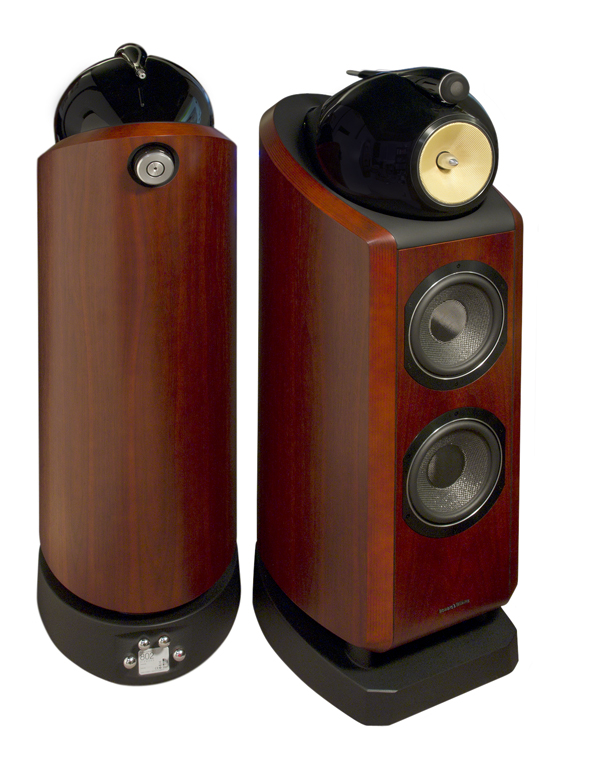
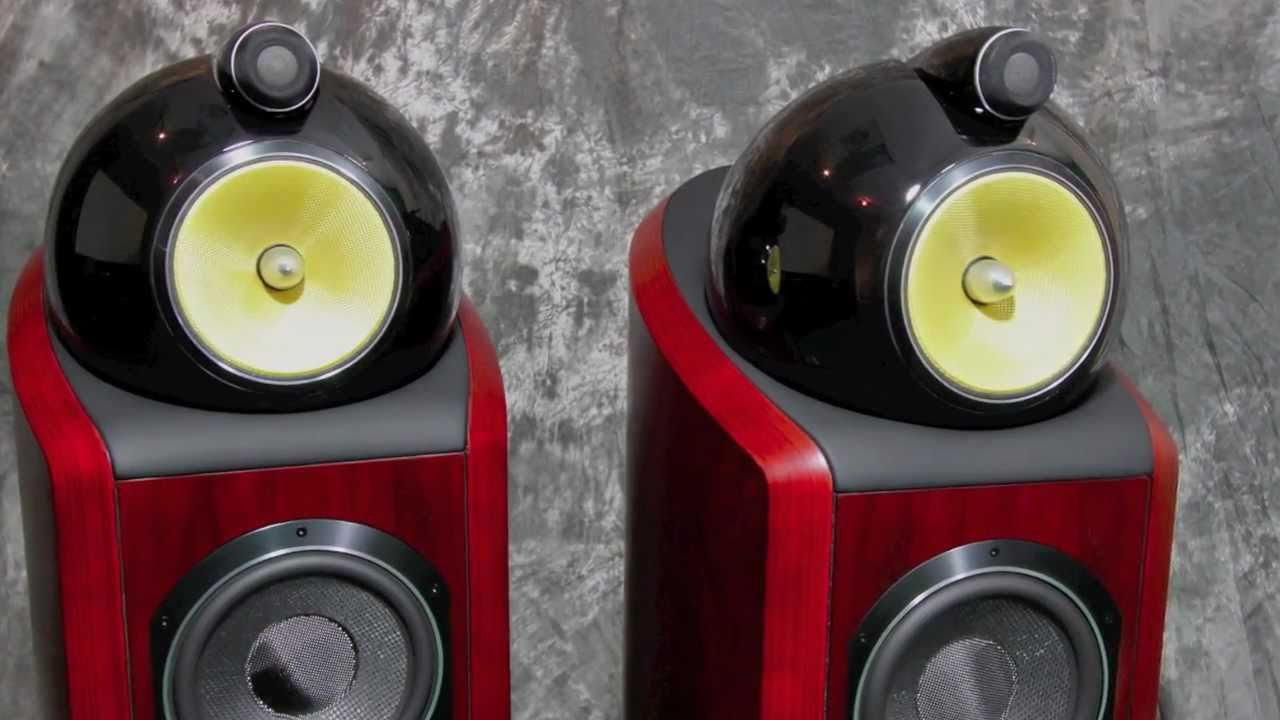
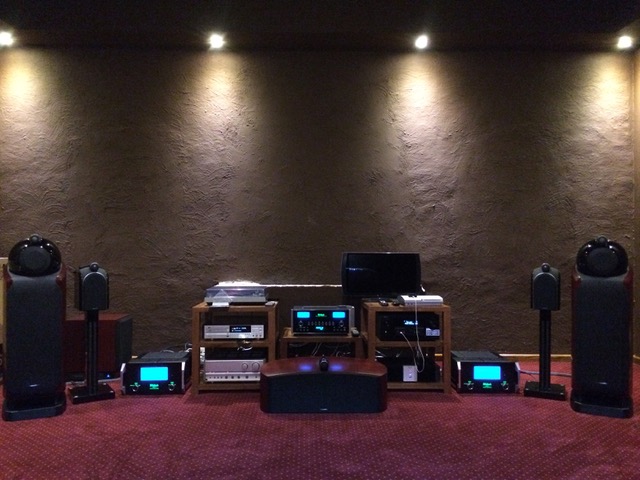
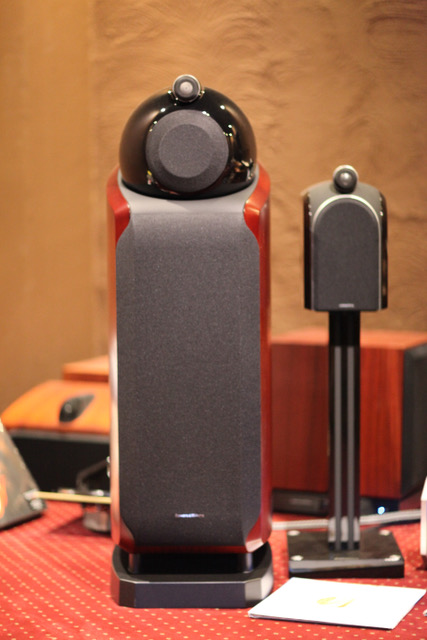

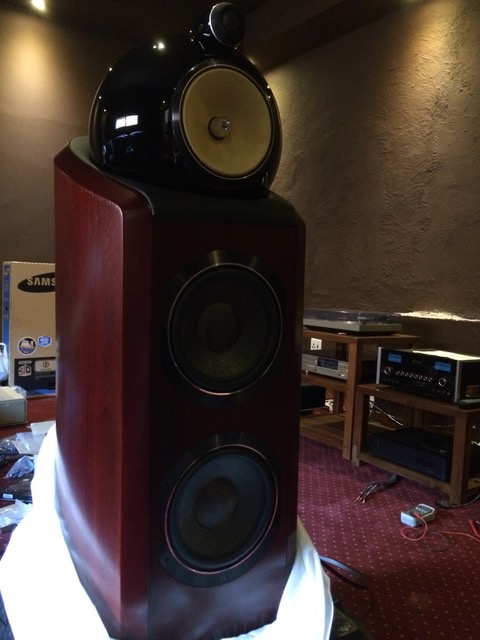
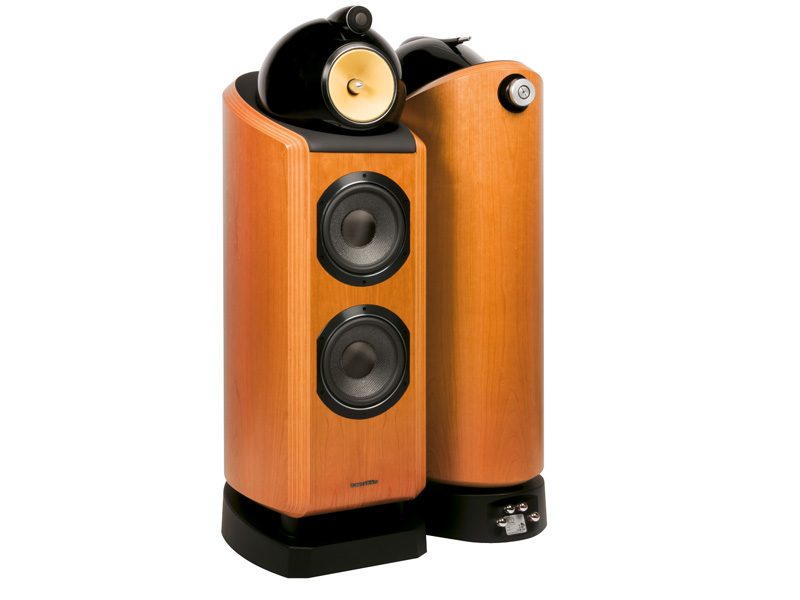
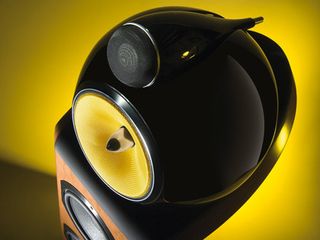
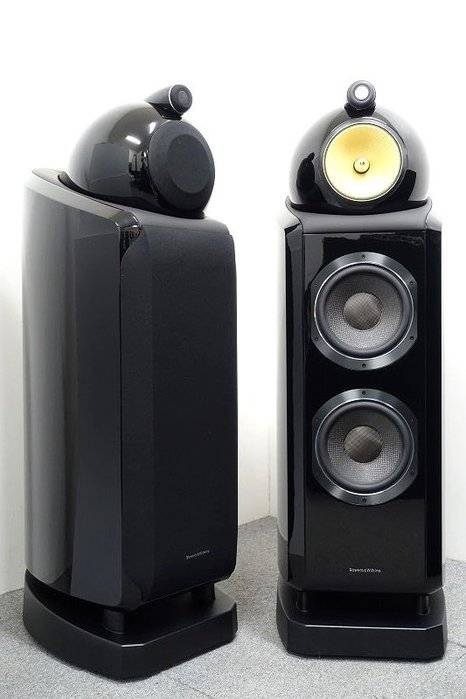
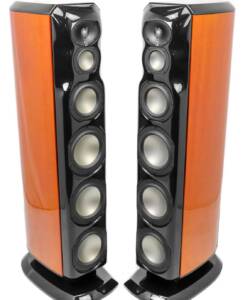
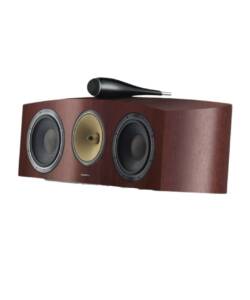
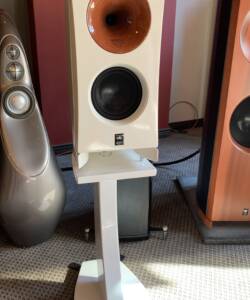
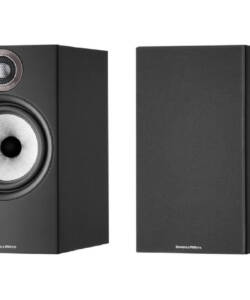
Reviews
There are no reviews yet.